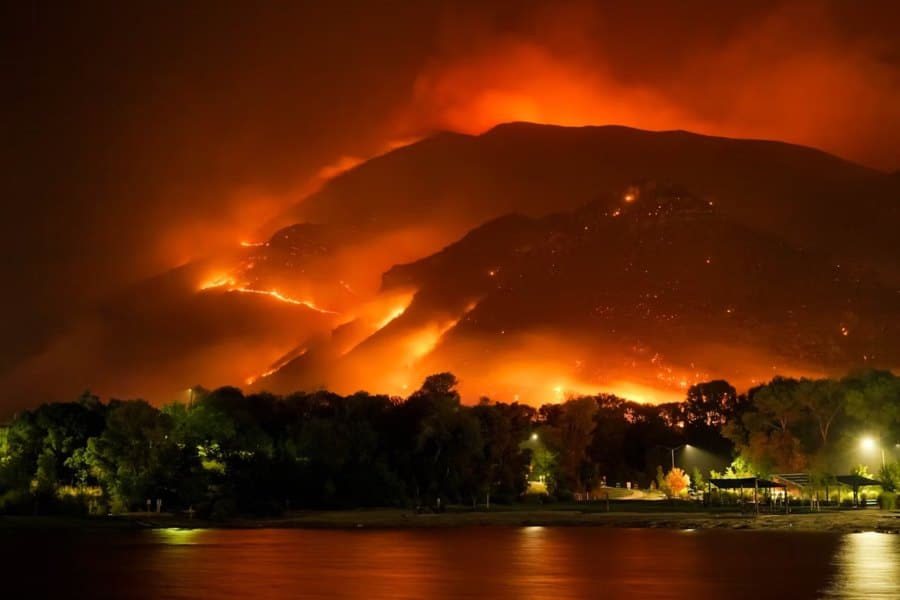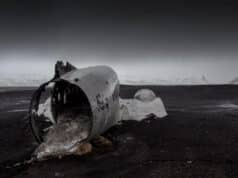
Fire is not only a destructive force; in many landscapes it is a life-giving reset button. If you have ever asked how do wildfires help maintain savannas and grasslands?, the short answer is that periodic burning keeps these open ecosystems open. In fire-adapted regions—from African savannas to North American tallgrass prairies—grasses evolve to regrow quickly after flames, while frequent, low-to-moderate intensity fires prevent young trees and shrubs from taking over. Without fire, woody plants outcompete grasses, shade out wildflowers, and gradually convert a biodiverse, grazer-friendly biome into closed woodland.
Wildfire also recycles nutrients locked in dead stems and leaf litter. Ash returns phosphorus, potassium, and trace minerals to the topsoil, spurring a flush of green growth that feeds insects, grazers, and predators up the food web. By breaking up continuous fuels into a mosaic of recently burned and longer-unburned patches, fire generates habitat variety—some areas for foraging, some for nesting, and others for cover.
Fire’s Role in Savannas and Grasslands
Fire-adapted grasslands and savannas evolved with recurring ignition from lightning and people. In these places, the question isn’t whether fire belongs, but how these systems persist. Regular burning prevents woody encroachment by top-killing seedlings and saplings before they can form dense thickets. Grasses survive because their growth points sit at or below the soil surface, allowing rapid resprouting once rains return.
Nutrient cycling is the second pillar. Dead stems, leaves, and thatch accumulate quickly in productive grasslands. When a cool, fast-moving fire sweeps through, it volatilizes carbon but leaves behind mineral-rich ash. That ash acts as a pulse of available nutrients—especially phosphorus and potassium—triggering a green-up that supports grazers and pollinators. In this way, fire connects directly to forage quality and wildlife health.
Third, fire resets the light environment. Shrubs and young trees cast shade that disadvantages sun-loving grasses and forbs. Recurrent, low-intensity burns keep canopies sparse, allowing high light to reach the ground layer. This maintains the signature openness of savannas, where scattered trees coexist with a continuous grassy understory. The functional result is a balance: enough trees for perches, fruit, and shade, but not so many that grass declines.
Biodiversity depends on spatial variety. Each fire leaves a mosaic: recent burns with tender shoots, one- to three-year-old patches rich in flowering forbs, and older stands providing cover. Predators hunt edges, birds nest in unburned refuges, and herbivores track the most nutritious regrowth. This patchwork creates dynamic habitat diversity.
Fire Regimes that Sustain Savannas and Grasslands
Fire regimes shape the health of savannas and grasslands, balancing frequency, intensity, and seasonality to sustain biodiversity and openness. Through prescribed and cultural burning, people and nature together maintain resilient, thriving landscapes.
Frequency: how often should fire return?
In many savannas and prairies, intervals of 1–4 years keep woody encroachment in check and maintain herbaceous diversity. Longer gaps allow shrubs to get too tall to top-kill, while overly frequent burns may reduce ground-nesting refuges. Managers tune frequency to rainfall and productivity.
Seasonality: When fire best supports grasslands
Late-dry-season burns often carry well and target woody stems; early-season fires can be cooler, protecting soil biota. The season you choose shapes outcomes—flowering timing, seed set, and grazer use—and varies across regions and time zones; see <a href=”#”>Time in America</a> for a simple way to think about how shifting seasonal windows influence planning and burn safety.
Intensity and behavior: matching the goal
Cool, fast head fires clear litter without baking soils; hotter backing fires can better suppress saplings. Intensity depends on wind, humidity, and fuel moisture. Calibrating conditions is central to putting fire to work in practice.
Scale and pattern: building beneficial mosaics
Burn units that vary in size and shape produce habitat heterogeneity. Rotating patches across years spreads risk, fosters diverse plant communities, and offers wildlife a menu of structures.
Cultural and prescribed burning: people as keystone partners
Indigenous fire stewardship long sustained open ecosystems. Today, prescribed burns—informed by that knowledge—replicate natural regimes where ignition has been suppressed, delivering the same core benefits.
Fire Benefits that Sustain Savannas and Grasslands
Fire delivers a suite of quick, measurable gains for open ecosystems—controlling shrubs, recycling nutrients, and boosting wildlife habitat. Here’s a concise snapshot of the benefits that keep savannas and grasslands healthy, diverse, and resilient.
- Woody encroachment control: Recurrent burns top-kill shrubs and saplings before they close the canopy, keeping grass dominant and maintaining the tree–grass balance that defines savannas.
- Nutrient recycling and soil stimulation: Ash returns minerals to surface soils, boosting post-fire green-up. Fine fuels combust quickly, warming soils briefly without deep sterilization, and microbial communities rebound fast.
- Biodiversity and habitat mosaics: Patchy burns create a shifting quilt of short regrowth, medium-aged stands, and older cover. Different species specialize in different patches, raising alpha and beta diversity.
- Forage quality and grazer dynamics: New shoots after fire are protein-rich and palatable, concentrating herbivores where managers can monitor them. This “graze-the-green” effect can also steer animals away from sensitive areas.
- Fuel reduction and risk moderation: Frequent, mild fires consume the fine fuels that otherwise feed rare but severe events, lowering the ceiling on future fire intensity.
- Invasive species checks: Some invaders exploit fire, but many woody and thatch-accumulating species lose ground when burns are timed to disadvantage their growth phases, giving natives a competitive edge.
- Pollinator and wildflower boosts: Fire breaks crusted litter, exposes soil, and cues germination in certain forbs. The post-fire bloom supports bees, butterflies, and other pollinators.
- Carbon and resilience trade-offs: Grasslands store much of their carbon belowground in roots and soils. Regular cool fires may release less long-term carbon than catastrophic events, while preserving drought-resilient, open structure.
- Visibility and access for management: Reduced thatch improves access for surveys, invasive removal, and restoration seeding.
- Cultural values and heritage: Reviving cultural burning practices reconnects communities to landscapes and keeps knowledge alive alongside ecological function.
Safeguards and Climate Realities of Savanna Fire Management
Beneficial fire isn’t a blank check. The same flames that sustain prairies and savannas can harm people and wildlife if misapplied. Safety starts with context: match fuel loads, weather windows, and local species traits to clear objectives. Avoid extreme heat, high winds, and very low humidity that turn cool grassfires into fast-moving threats. Protect unburned refuges each year and rotate patches to maintain a multi-age mosaic.
Timing and trust matter. Skip burns during peak nesting or just before seed maturity; use drought breaks or pre-rain windows to reset seedlings and prepare restoration seeding. Manage smoke and engage communities with notices, signage, and contingencies. As fire seasons lengthen, lean on better forecasting, training, and Indigenous partnerships. Close the loop with monitoring to adapt frequency, season, and intensity.
Management playbook—turning principles into practice
Turn strategy into action with a practical burn plan. These field-tested steps—objectives, weather windows, patch design, grazing integration, refugia, and monitoring—translate fire ecology into safe, measurable results on the ground.
- Set clear objectives for open-ecosystem outcomes: Define targets: reduce shrub cover by X%, increase native grass cover by Y%, or create a three-age mosaic. Tie each target to your burn plan.
- Build a burn window around weather and fuel: Track fuel moisture, wind, and humidity. Choose days that yield cool, fast burns to protect soils and maximize nutrient-return benefits.
- Design patch mosaics for biodiversity: Stagger unit sizes and shapes; reburn intervals vary by productivity. This spatial variety operationalizes the benefits of fire on the ground.
- Integrate grazing and fire (“pyro-pastoralism”)
Use post-fire green-up to draw grazers, then rest the other patches to recover. Coordinating fire and grazing keeps fuels manageable and forage high. - Protect refugia and sensitive features: Leave unburned strips along wetlands, rocky outcrops, and nesting zones. Refugia maintain species during fire and speed recolonization after.
- Monitor, learn, adapt: Measure fuels, vegetation composition, and wildlife use before and after burns. Adjust frequency, season, and intensity next cycle to refine outcomes.
Conclusion
In ecosystems built to burn, how do wildfires help maintain savannas and grasslands? is answered by functions you can see on the ground: shrubs kept in check, vigorous green-up after ash-fed rains, wildflowers and pollinators booming, and a safe, patchy mosaic that moderates future risk. Beneficial fire is a maintenance tool as much as a natural process. When managers respect weather windows, protect refuges, and integrate cultural knowledge, fire remains a renewable service—recycling nutrients, sustaining biodiversity, and preserving the iconic openness of savannas and grasslands. In short, smart fire keeps these landscapes alive.
FAQ’s
Is every wildfire good for savannas and grasslands?
No. Benefits come from frequent, cooler burns that match local ecology. Extreme, wind-driven fires in hot, dry conditions can be harmful to people and wildlife.
How often should an area burn to stay a grassland or savanna?
Commonly, every 1–4 years, adjusted for rainfall, productivity, and management goals. Longer gaps invite woody encroachment; too-frequent burns can reduce cover.
Do fires damage soil life?
Cool, fast grassfires mostly consume surface litter and briefly warm the upper soil. Microbial communities typically rebound quickly, aided by nutrient-rich ash.
What about wildlife during burns?
Many species use unburned refuges or burrows to avoid flames. Planning always includes leaving refugia and staggering burns to maintain safe cover every year.
Can prescribed fire reduce catastrophic wildfire risk?
Yes. By removing fine fuels regularly, prescribed burns lower the potential intensity of future fires, decreasing the chance of severe crown-scorching events.







